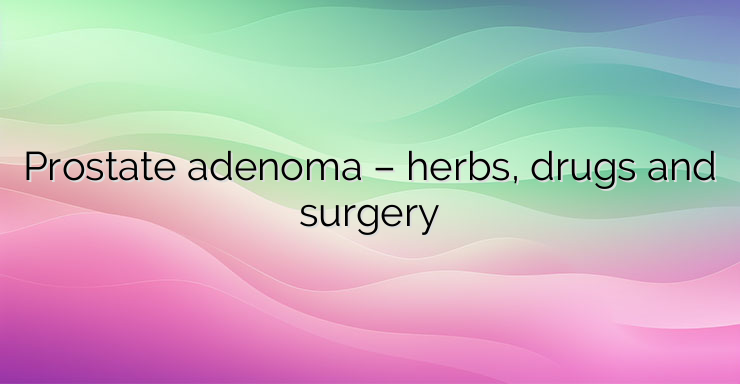Prostate adenoma is another name for benign prostatic hyperplasia. It is believed to be one of the symptoms of the body’s natural aging. However, the condition causes discomfort and complications in affected men. What is the disease? Prostatic hyperplasia is widespread and affects a large percentage of men over the age of 50. The reason for the development of prostate adenoma are different and are still being clarified. Age and hormones from the testosterone group are the basis. The symptoms caused by an enlarged prostate are typical and varied, disturbing the quality of life to varying degrees. Men report difficulty starting and stopping urination, a weak stream, residual urine in the bladder, frequent urination, and feeling full afterward. There may be inadvertent dropping, difficulty holding, and a number of other disturbances. What are the methods of prevention and drug treatment? In the treatment of the disease state, many different methods are considered – from herbal preparations to radical surgery. Despite the development of medicine, today both methods retain their role. Urologists judge which treatments to use based on the degree of growth, symptoms, age, etc. At the beginning there is the so-called active monitoring by the doctor for moderate symptoms. In this period, the rate of progression, the severity of the symptoms, the patient’s calmness are evaluated. Recommends an adequate diet and check-ups. Eating more vegetables is thought to provide phytoestrogens that reduce the harmful effects of testosterone. Herbal medicine is also a consideration. There are a number of preparations with phytoextracts on the market, some of which have been reported to have beneficial effects on prostate function and improvement of micturition disorders. As a rule, the process of hyperplasia is progressive, and even after an improvement occurs, there is a need for stronger medications. Such are alpha-1 receptor blockers, 5-alpha reductase inhibitors, as well as combined drugs. While the former affect the tone of the smooth muscles in the prostate tissue and capsule, the latter act on a hormonal level. They intervene in the metabolism of testosterone, reduce the volume of the prostate and slow down the progression of the disease. However, the effect occurs after months of use. NEWS_MORE_BOX There are a number of methods for surgical correction of prostate adenoma. In case of insufficient effect of oral medications or in case of rapid and severe progression, operative methods of treatment are applied. They are divided into radical and microinvasive methods. The behavior of open operations to remove part or all of the prostate is radical. Bloodless removal of the prostate – transurethral resection (TURP) is the most common method today. If possible, it is always preferred by operators because of faster recovery, less complications, etc.Laser treatment is another method of gentle surgery and is often used. Again transurethral, by means of a laser, the excess tissue is removed, which leads to the expansion of the narrowed channel. Another method is to use high or low heat to burn the fabric. They are respectively called hyperthermia surgery (above 50 degrees) or cryosurgery (below 0 degrees). Ultrasound waves with a special directionality are also used to adjust the volume of the enlarged prostate. During balloon dilatation, a balloon is expanded in the urethra through a catheter, the lumen of the channel is mechanically expanded and the emptying of the bladder is improved accordingly. In severe cases, unresponsive to the described methods, placement of a permanent urethral catheter is considered. Benign prostatic hyperplasia is a process that does not pass most men after a certain age. It is important to know that treatment exists and complaints can be removed.


Leave a Reply